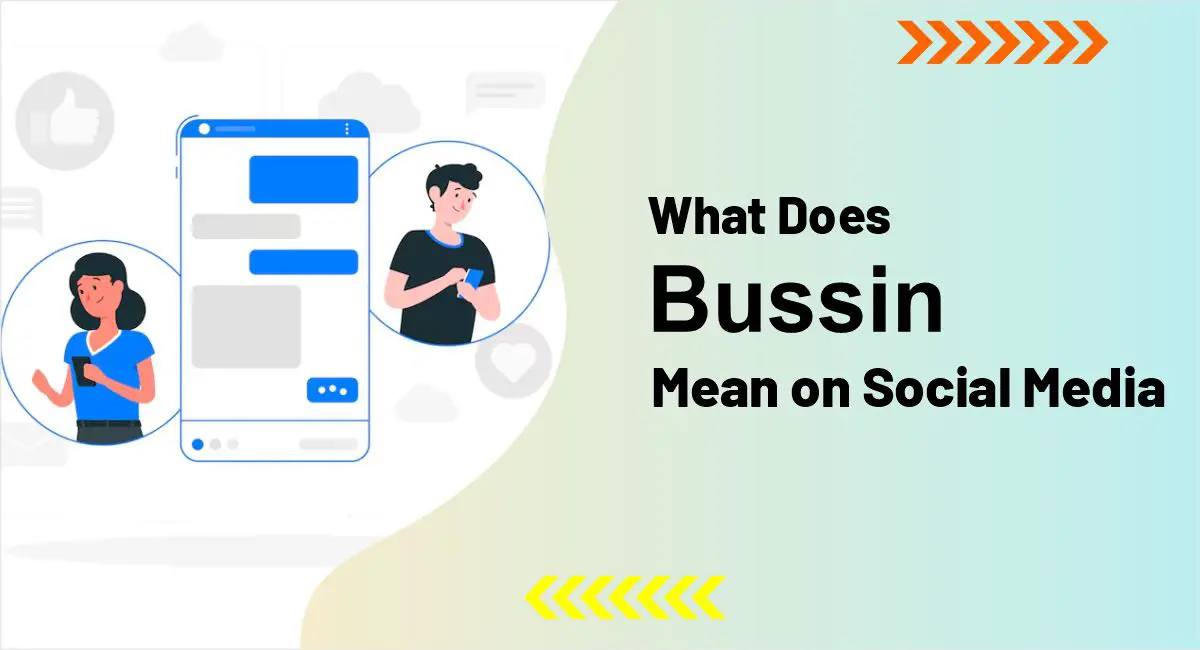What Does Bussin Mean? The Social Media Slang That Signals Approval and Flavor
In the ever-evolving language of the internet, certain slang terms take on a life of their own. One such term that has skyrocketed into popularity is “bussin”. Whether you’re scrolling through TikTok, watching Instagram reels, or browsing food review memes, chances are you’ve seen or heard someone describe something as “bussin.” But what does it actually mean, and how has it become so deeply embedded in today’s online culture?
Let’s dive into the origin, meaning, usage, and significance of the word “bussin” in the world of social media and modern digital communication.
What Does “Bussin” Mean?
In internet and pop culture lingo, “bussin” is a slang term used to describe something as extremely good, delicious, or impressive. It’s most commonly used in contexts where someone is reacting to flavorful food, a stylish outfit, good music, or anything that triggers a strong positive reaction.
For example:
- “Yo, this mac and cheese is bussin!”
- “That fit you got on is straight bussin.”
- “This new track is bussin, no cap!”
It’s a way of giving high praise in a relatable, often humorous way.
Origin and Cultural Roots of “Bussin”
Like many popular internet slang terms, “bussin” originates from African American Vernacular English (AAVE). It has been used in Black communities for years before becoming popularized by social media.
Originally, it was a way to describe food that tasted exceptionally good. Over time, it broadened to include fashion, music, and anything that delivers an above-average experience.
The popularization of “bussin” is a testament to the significant influence of Black culture on mainstream trends—especially online. Platforms like TikTok and Instagram helped bring the term to a global audience, often without crediting its roots.
How to Pronounce “Bussin”
“Bussin” is pronounced as [buh-sin], with a soft “u” and without the final “g.” The emphasis is typically on the first syllable: BUS-sin.
It’s often written with an apostrophe at the end to indicate the dropped “g”—“bussin’.” This informal style aligns with its roots in spoken vernacular.
Bussin on TikTok and Instagram: Why It Took Off
TikTok’s viral format has turned countless words and catchphrases into household terms, and “bussin” is no exception. Food reviewers, fashion influencers, and everyday users started describing things as “bussin” to highlight their enthusiasm. Often, this was paired with exaggerated reactions, comedic sketches, or dramatic visuals.
Some common scenarios where users say “bussin” on TikTok or Instagram:
- Trying a new snack or recipe and reacting with, “Mmm, that’s bussin!”
- Reviewing a streetwear outfit: “That drip is bussin fr fr.”
- Posting a meme with someone dramatically enjoying food, captioned: “Bussin’ like grandma’s cooking.”
As hashtags like #bussin and #bussinbussin started gaining millions of views, the term became a recognizable label for content that sparks joy or admiration.
How the #Bussin Trend Influences Pop Culture
Beyond just slang, “bussin” has become a cultural signal—a way to bond over shared tastes and experiences. It represents more than just approval; it’s part of a digital dialogue. People use it to:
- Join trending challenges
- Participate in food reaction videos
- Comment on music releases
- Review fashion hauls
The versatility of “bussin” has helped it cross from a niche internet term to one used by mainstream media, brands, and influencers.
Examples of Bussin in Sentences
To better understand the use of “bussin,” here are a few example phrases:
- “This burger got me weak. It’s straight bussin.”
- “Your playlist is bussin—every track is fire.”
- “Those sneakers? Bussin. Where’d you cop those?”
- “Tried grandma’s cobbler for the first time. Man, it’s bussin’ bussin’.”
The double use of “bussin’ bussin'” often emphasizes just how good something is. It’s like saying “really, really good.”
How Brands Are Using “#Bussin” in Marketing
In today’s digital marketing landscape, relevance and relatability are crucial. With the younger generation using terms like “bussin” regularly, brands are jumping on the trend to appeal to Gen Z and Millennials.
Examples of brands leveraging the “#Bussin” trend:
- A fast-food chain posting a photo of a new burger with the caption: “New drop alert — this one’s bussin’ fr fr 🍔🔥.”
- A clothing brand showcasing a streetwear collection: “Our summer fits are officially bussin’ 😎🧢.”
- Beverage companies launching influencer collabs and encouraging fans to describe the flavors as “bussin.”
Using slang helps brands show they’re tuned in to cultural conversations. However, it’s critical that usage feels authentic, not forced or tone-deaf.
Do’s and Don’ts of Using “Bussin” as a Brand or Influencer
✅ DO:
- Use “bussin” if your target audience is Gen Z or Millennials.
- Incorporate the term naturally into content where you’re genuinely reacting to something great.
- Use visual content—like food close-ups or fashion try-ons—that support the slang visually.
❌ DON’T:
- Use “bussin” sarcastically in a way that may come off as mocking slang culture.
- Overuse the word in every post—it may lose its effect.
- Use it if it doesn’t align with your brand voice or tone.
A misused slang term can appear inauthentic and even alienate the audience you’re trying to connect with.
The Cultural Significance of “Bussin”
The rise of “bussin” is a reflection of how Black culture and AAVE consistently shape internet trends. From music to memes, many viral expressions have their roots in Black communities. Recognizing these origins fosters cultural respect and appreciation.
Educating yourself about the context of slang like “bussin” allows for better usage and avoids cultural appropriation. Giving credit where it’s due—especially when borrowing from historically marginalized communities—should be a norm in digital communication.
Similar Slang Terms to Know
If you’re into internet lingo, here are some other trending terms related to “bussin”:
- No cap: No lie, being honest
- Drip: Stylish or fashionable clothing
- Fire: Really good or excellent
- Vibe: The mood or feel of something
- Slaps: A term used when music is exceptionally good
These can often be used in conjunction with “bussin” to intensify praise.
Example: “That playlist is fire and bussin. No cap.”
Conclusion: Why Bussin Is Here to Stay
“Bussin” is more than just a fleeting internet trend. It’s a linguistic reflection of excitement, satisfaction, and appreciation—especially in today’s content-driven world.
From its origins in African American Vernacular English to its place on TikTok food reviews and Instagram reels, “bussin” represents how digital culture celebrates what’s good, tasty, and worth sharing.
So whether you’re hyping your favorite dish, admiring a fashion drop, or just vibing to a new song, don’t be shy to say it like it is: That’s bussin’.
And for the really, really good stuff? It’s bussin’ bussin’.
Read these also:
- What Does ISO Mean
- What Does “Moots” Mean
- What Does GOAT Mean
- What Does “W – WIN” Mean
- What Does TBF Mean
- What Does “Trending” Mean
- What Does “FR” Mean
- What Does IYKYK Mean
- What Does “Slay” Mean
- What Does “Delulu” Mean
- What Does SMH Mean
- What Does TBT Mean
- What Is a Profile Picture (PFP)
- What Does OPP Mean
- What Does Finna Mean
- What Does “POV” Mean
- What Does Cringe Mean

